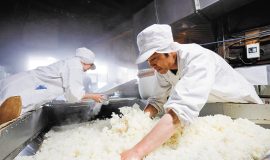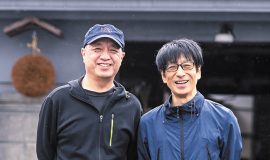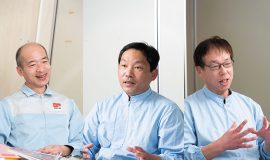Expressing Fukui’s “Etsu-zan Jaku-sui”, aided by wishes of late father
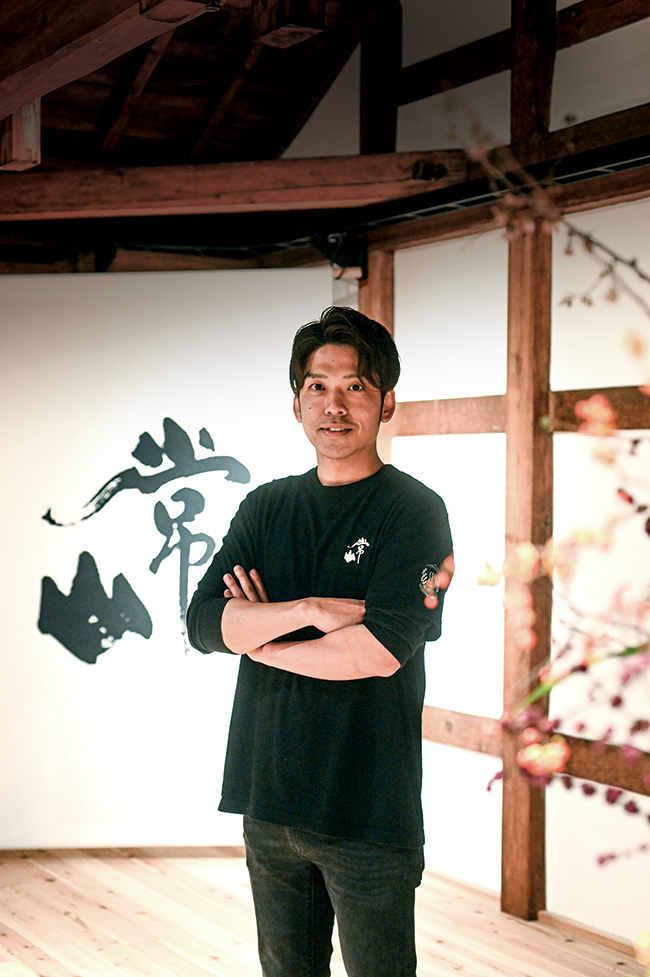
Joining the brewery after the Great East Japan Earthquake, frantically materializing Jozan’s taste
It was Shinpei Tokokyama, who had just took the position of president in 2022, that greeted us at Jozan Shuzo, in a residential area 10 minutes’ walk from Fukui Station. The brewery is the oldest among the 10 breweries that call Fukui City home. In the Taisho period, it was among the top-producing breweries in the prefecture, but then lost everything in the 1945 Fukui air raid. Three years after the reconstruction, Fukui Earthquake happened, leaving the brewery building in complete collapse. Shinpei’s great grandfather rebuilt the brewery yet again, with his indomitable spirit. Later, Shinpei’s father, Hideo succeeded to the business at a young age when his father passed away, and rebranded their flagship label “Habutae Masamune” they maintained from the time of the brewery’s beginning, and established the new Jozan brand with the same kanji as their family name, wishing their name would be known as high-quality sake. Hideo loved the local community as the community loved him back, while he dedicated himself to agriculture besides brewing. However, an illness cut his life short at a young age of 48 in 2004. Hideo’s son was only 19 at the time, and his wife, Yukiko took over the operation of the business without previous experience, managing housework and taking care of the elderly family members. They survived the age of sake’s downturn. Tokoyama (Shinpei) graduated from university and started working in sales at Ozeki Corporation in Hyogo. He says “I had a vague idea that I was going to succeed to the family business, but I did not know when,” however, he did discover and began to appreciate that his family brand had a role as craft boutique sake in comparison with the giant Ozeki. Around that time, March 2011 came, and along with it the Great East Japan Earthquake. Tokoyama was in the middle of a business meeting in Shibuya, and witnessed the world turn upside down. He decided to go home and do as much as he could from his home brewery, and joined Jozan at the age of 27 that year. He was also encouraged and inspired by other owner-brewmasters of his age around Japan who produced brands such as Tanaka Rokujugo, Hirotogawa, and Tenmei.
Tokoyama trained under Kuriyama toji, his predecessor, for 2 years, as well as at the National Research Institute of Brewing (Takinogawa, Kita-ku, Tokyo). When Kuriyama retired for his age, Tokoyama became production manager at 30 years of age. Since then, it had been a constant series of troubles without anyone to ask—before Katsumi Tanaka came to the rescue. He was a friend of Tokoyama’s father, who previously served as managing director at Daishinshu Shuzo (Matsumoto City, Nagano). Tanaka took care of Tokoyama like a little brother, and Tokoyama brewed his first sake by asking Tanaka for advice over the phone almost every day. After completing the first brewing season, Tokoyama visited Daishinshu Shuzo to train, where he was able to learn and gain experience. Consequently, he won a Gold prize at the Annual Japan Sake Awards his 3rd season. Tokoyama looked back and shared with us: “They say three years on a stone will make the stone warm. Something finally came out of the effort at that moment, thanks to so many people’s support.”
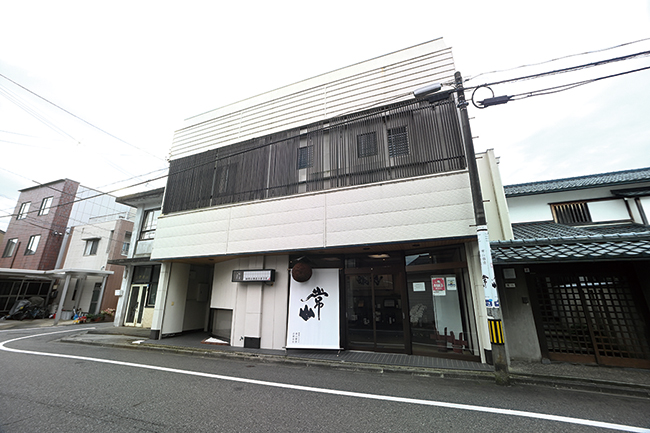
▲The brewery is located in the city center. Limited space without much storage area demands that most sake is shipped right after pressing (except some to be matured). Many women part-time workers are part of the brewing force, which is one of brewery’s tactics that make quality production a stable operation.
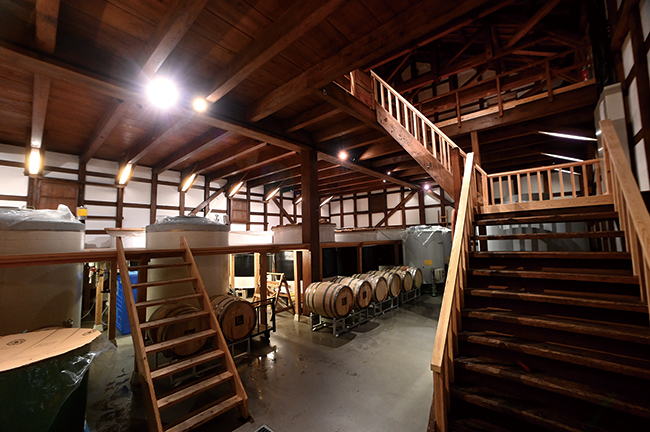
▲Previously, the brewery building was dark and outdated. When they fully renovated, they considered making it into a refrigerated facility to be able to brew all year round, but decided against it to demonstrate a traditional brewing setting, not a modern factory, to visitors from Japan and beyond, and applied natural material where they could.
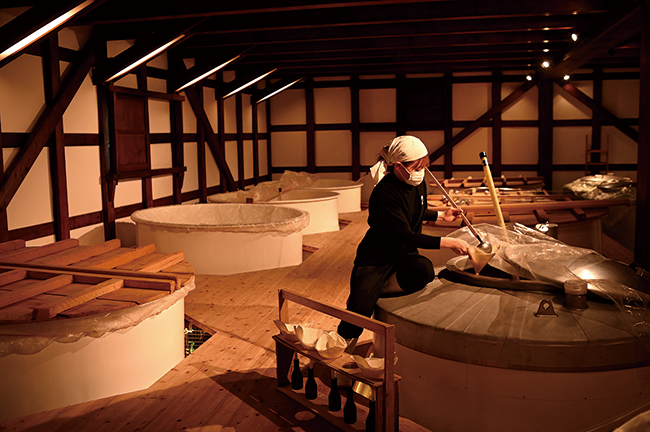
▲Brewing area within the storage building that is over 70 years old. In the 2017 renovation, the design was intended to be attractive to visitors as well as efficient so staff would feel motivated and proud to be in the space for long hours.
Work hours, equipment, organization: Questioning the taken-for-granted
Today, Tokoyama and his 5 brewing staff members produce 500 koku (over 90,000 liters) between September and April. Fermentation batches are mainly 1,000 kiloliters, while some are 700 kiloliters. All rice is grown in Fukui, and varieties are Gohyakumangoku, Yamadanishiki, Miyamanishiki, and Sakahomare. They only use 2 kinds of yeast to keep their brewing recipes simple. Originally, the simplicity was due to Tokoyama’s inexperience, but it now serves as a framework in which brewing staff can improve while taking turns in different responsibilities.
In the 2017 large-scale renovation of the facilities, the floors were re-paneled and made flat for forklifts to operate floor-wide. The concept was that because brewing season is long, any small stress can accumulate; there should be minimal burden so the staff can focus on important processes. To bring steamed rice up to the second floor, they can now use a box lift. The rice washer was reengineered to have 6 shower heads so the washing would be more even, and carts were customized so the baskets they carry can be placed at the same place every time. They relied on their experience to gauge how much to open the valve to regulate the steam that is fed to the rice steamer, but now they can measure the volume by the newly installed meter. All equipment and tools are customized to suit the demands of the brewery. Tokoyama maximizes the use of tools and collects data, but also is particular about manual work. He tells his brewers to use their senses in everyday process, for example, tasting the moromi (fermenting mash) every day, so they don’t just become automated workers, and that “data is only there to corroborate your senses.”
In 2018, Tokoyama revised work schedule. Under the former brewmaster, they started working at 5am, and had breakfast in-between steaming rice. By consolidating some tasks, he was able to shorten the workday between 7:30am and 5pm. “This industry is laden with customary practice. But if you question what is taken for granted, it is possible to improve on the work conditions to be healthier for the body and the mind,” says Tokoyama. Moreover, “It has been over 10 years since I joined the brewery. I have been working tirelessly but decided to review my work style first. I will focus more on management in the future, and need to hire and raise young brewers. I would like them to have a work-and-life balance so that they can focus better during work hours.” That is how this brewery as a company made progress to the next level. We saw their resolve not just to brew good sake, but to realize sustainable brewing in tandem with people of Fukui.
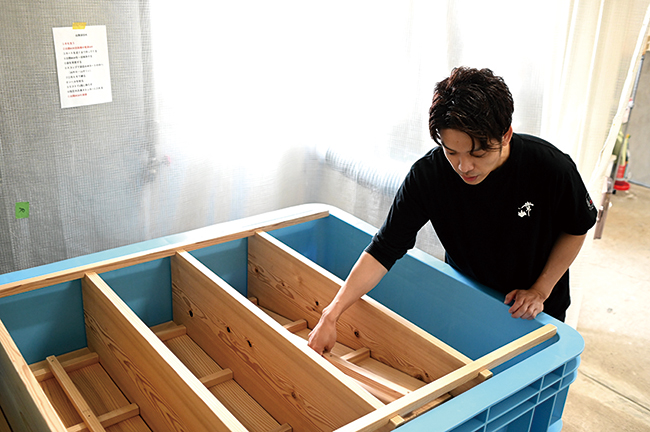
▲An efficient device to quickly cool rice koji once it comes out of koji room. They had it made when they renovated the brewery. If there are tools that they are not satisfied with, they talk with various manufacturers and have one custom-made. Tokoyama is full of ideas and constantly thinking of improvement.
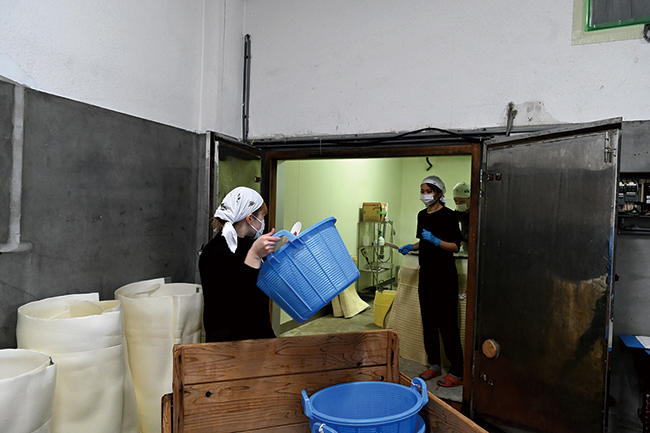
▲Their yeast starter is made by high-temperature saccharification method. Depending on the year, 40-50 yeast starter batches are made every year. Rice steamed on the 1st floor is brought up in a box lift. Box is equipped with wheels so they can be carted to the yeast starter room on the 2nd floor.
1 2


